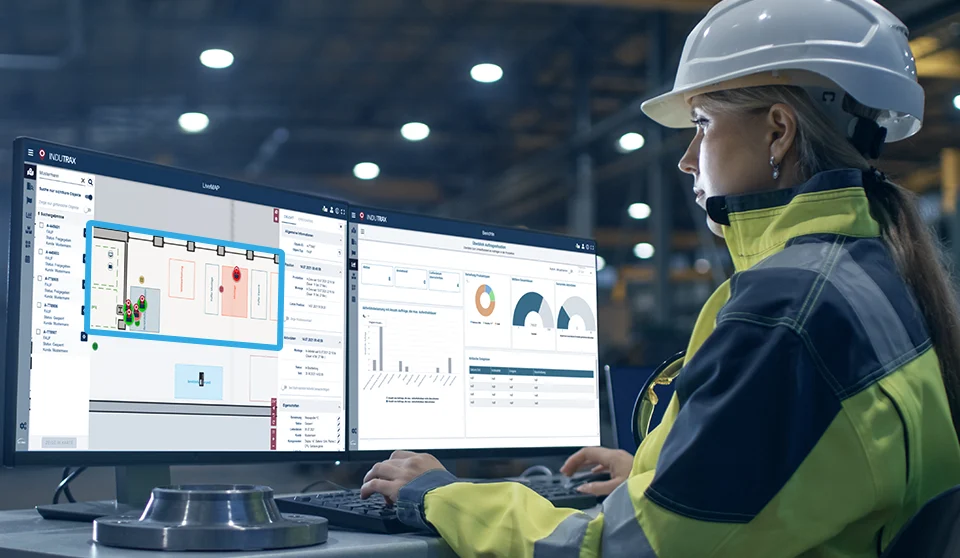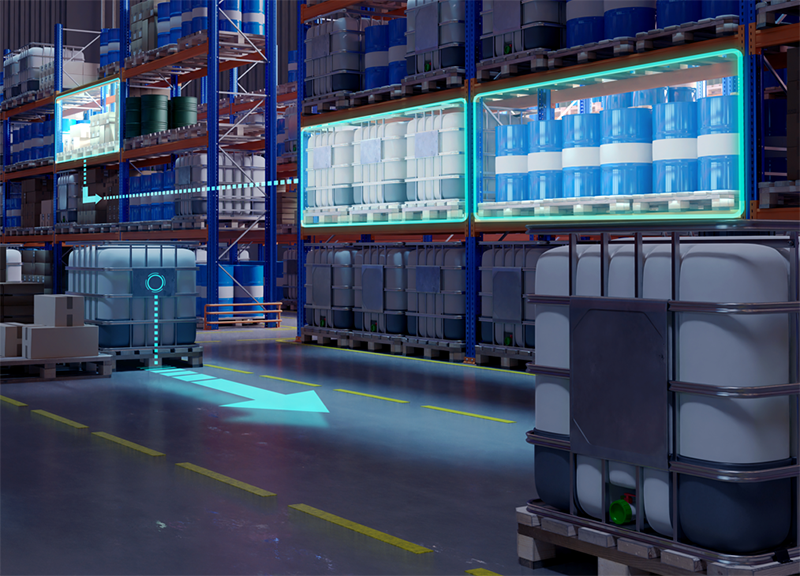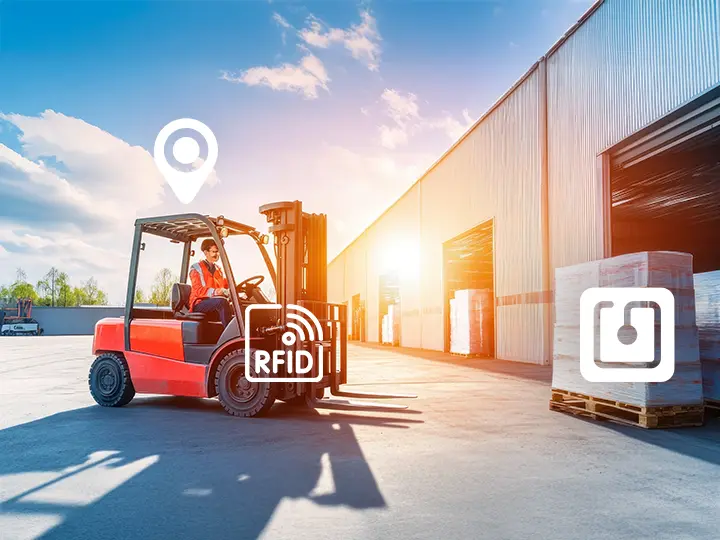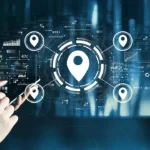
Location tracking made easy: the best methods for precise location determination
3. March 2025
Why your business will fall by the wayside without the right combination of RTLS technologies
9. April 2025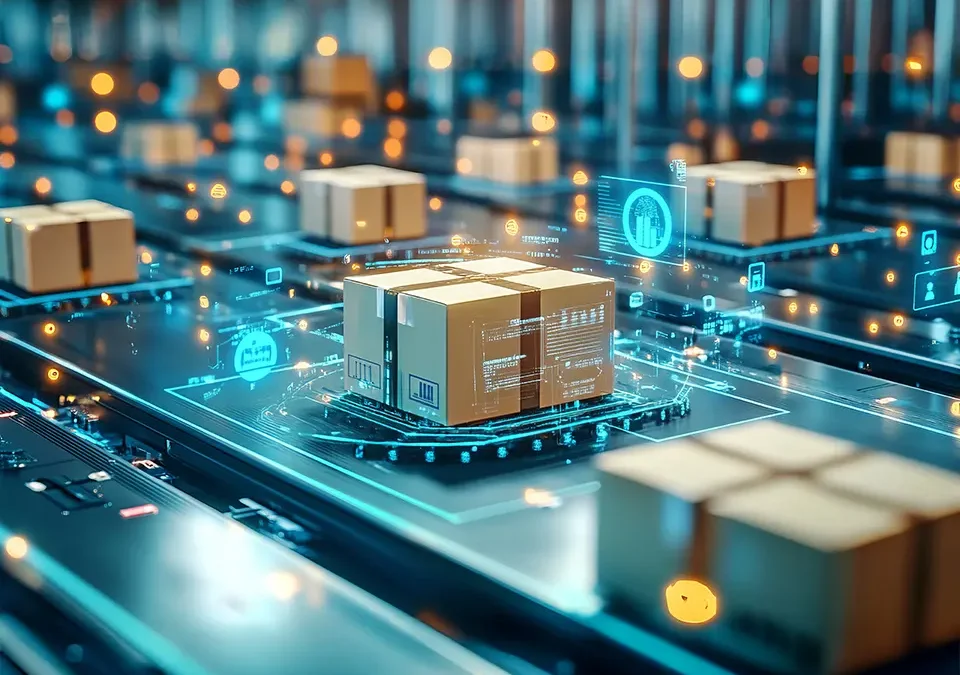
Seamless and future-proof tracking solutions with standards - how omlox combines tracking technologies
Tracking technologies are indispensable for logistics optimization, production control and asset tracking. However, companies face a challenge: the large number of technologies, tracking systems and providers makes it difficult to implement, scale and integrate suitable solutions, which leads to high costs and inefficient processes.
The solution? Standards such as omlox or EPCIS, which overcome these challenges and enable cross-manufacturer networking. Find out why the relevance of different standards for tracking technologies and RTLS has a significant impact on your success.
Why is the integration of tracking systems so complicated? The market for tracking technologies is fragmented: GPS, Bluetooth, UWB, RFID, LiDar - each tracking technology has strengths and weaknesses and is particularly suitable for different use cases. This can result in isolated solutions that cannot communicate with each other.
Why standards are crucial for positioning solutions
As demand for intelligent IoT solutions increases, so does the need for secure, interoperable positioning systems and RTLS. This is where open standards come into play: they connect different products and technologies with each other, enabling seamless communication between them and integration into company networks. They thus offer companies flexible, scalable and cost-efficient use of location tracking. Particularly promising: omlox - the open industry standard that integrates different tracking technologies as a cross-manufacturer interface and enables uniform solutions.
Standards are therefore the key to using different systems and components of tracking technologies seamlessly and securely. The following advantages are particularly noteworthy:
Interoperability and compatibility
Standards ensure that devices from different manufacturers work together without any problems.
Data security and data protection
Tracking technologies often work with sensitive location data. Security and data protection standards prevent misuse.
Scalability
With standardized systems, components of tracking technologies can be flexibly expanded or replaced.
Investment security
Open standards reduce dependencies on special, closed systems and thus reduce development and maintenance costs in the long term.
For manufacturers, this means that they can offer their products more easily in different markets as they are based on common standards. Integration into existing infrastructures is also easier to implement.

From GPS to lidar: why different tracking technologies need their own standards
Tracking technologies differ greatly in their implementation, which is why different standards are required. While standards have been established for GNSS/GPS or RFID for decades, newer technologies such as BLE, UWB or 5G positioning still lack universally adapted standards.
But which standards are relevant?
Basically, standardization with regard to the system components of a positioning system can be divided into
- Hardware compatibility: Technology-dependent standards, depending on the environment (e.g. GPS, Bluetooth, UWB, Wi-Fi, RFID)
- Data communication: regulations on interoperability in networks
- Data protection & security: standards for secure location determination
Below we take a closer look at different tracking technologies and the specific standards required for their hardware compatibility and data communication.
Standards for the compatibility of hardware components
Relevant standards for hardware components depend largely on the technology, e.g. GPS/GNSS, Bluetooth, UWB, Wi-Fi, RFID and the specific environmental conditions such as geography (continent), indoor or outdoor use:
GPS/GNSS - Global satellite positioning
International organizations such as ITU, ICAO and ISO ensure that various satellite systems such as GPS, Galileo, GLONASS and Beidou are interoperable. Among other things, these standards regulate signal compatibility, frequency usage and positioning accuracy.
RFID (Radio-Frequency-Identification) & NFC (Near Field Communication)
RFID systems are based on standards that standardize communication between transponders and readers worldwide in three different frequency ranges, thus ensuring the interoperability of components from different manufacturers.
Wi-Fi
Wi-Fi standards from the IEEE organization not only enable wireless communication worldwide, but also precise location determination through new additions to the standards - for example, by measuring propagation times and angles. This allows IT devices to locate themselves in existing Wi-Fi infrastructure.
Bluetooth Low Energy (BLE)
In addition to communication standards, globally valid specifications of the Bluetooth SIG also define location mechanisms based on BLE for the use of RSSI-based signal strength measurement for presence detection (beaconing) and for more precise location tracking via directional measurement (AoA & AoD).
Ultra-wideband (UWB)
Standardization for UWB is fragmented and various organizations such as the UWB Alliance, FiRa, CCC and IEEE are attempting to define generally applicable regulations.
However, different frequency clearances in the individual countries prevent similar use around the world. New standards for location tracking applications regulate the physical layer and media access to enable precise location tracking, primarily by means of ranging.
These standards ensure that hardware components from different manufacturers for a tracking technology can be operated in a compatible manner.
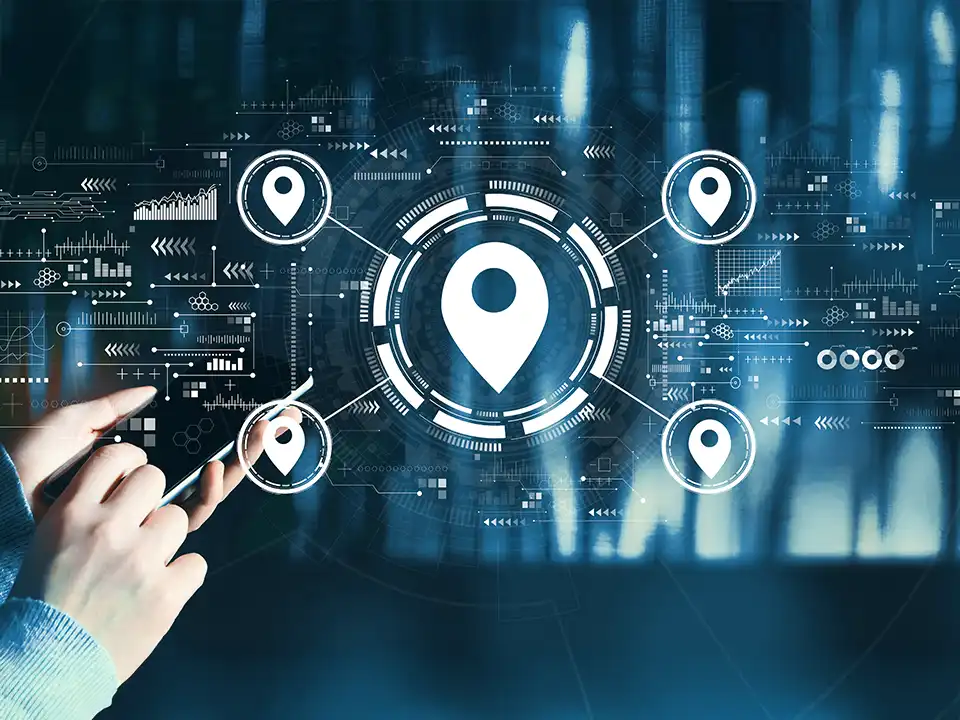
Location tracking made easy: the best methods for precise location determination
Imagine knowing where your materials, tools or production aids are at all times. No chaos, no delays, just maximum planning and precision.
Standards for data communication in networks
Efficient data communication in networks is essential for positioning systems. Standards ensure secure, interoperable transmission and processing of position data:
EPCIS
ISO/ IEC 24730
MQTT
OGC (Open Geospatial Consortium)
VDA5050
omlox
These standards ensure that position data from systems from different manufacturers and tracking technologies can be harmonized and integrated into various applications in an interoperable manner.
Standards for data protection and data security
In addition to technical interoperability, data protection and data security play a central role in tracking technologies. As they often process personal or confidential company data, they must meet high security standards.
ISO/IEC 27001
Ensures secure information management and protects the data processed by tracking systems.
GDPR (General Data Protection Regulation)
Regulates the protection of personal data in Europe, in particular location information, and ensures that companies protect the privacy of their employees and customers.
ISO/IEC 24730
Not only defines RTLS standards, but also takes into account data protection requirements for secure processing of position data.
omlox: A future based on standards
omlox is a pioneering initiative that establishes open, cross-manufacturer standards for the use of positioning and location data. Cooperation with other standardization organizations is intended to overcome silos and disruptions. Standardization of different standards should simplify the implementation of solutions.
Seamless location tracking - omlox as the future of tracking technologies
Numerous leading companies and market leaders from the tracking industry are working together on viable solution concepts that will shape the future of tracking technologies.
omlox: Standardization on two levels:
omlox Core Zone: Standardization of UWB radio frequencies and protocols in cooperation with the international organization FiRa, with the aim of establishing compatibility between UWB devices from different manufacturers.
omlox Hub: An open middleware that harmonizes position data from different tracking technologies and makes it accessible to IT systems.
Seamless and future-proof tracking solutions with standards - how omlox combines tracking technologies
With omlox, companies can integrate tracking technologies in a future-proof way, optimize existing systems and react flexibly to new developments. It also reduces integration costs and protects against dependency on individual providers.
INDUTRAX: Your partner for omlox integration
Our mission was clear from the outset: companies should be able to use position and location data in their own way - without being dependent on individual providers. This is exactly why we developed the INDUTRAX software platform: An open scalable and future-proof solution that allows companies full control over their tracking technologies.
As an active member of the omlox community in the PROFIBUS user organization e.V., we drive the further development of open standards. Our INDUTRAX Application Environment (IAE) integrates the omlox hub standard interfaces and enables companies to customize their positioning systems, expand them efficiently and integrate them effortlessly into existing IT infrastructures.
Become part of the omlox revolution with INDUTRAX!
Why wait? The future of tracking technologies is standardized, efficient and interoperable - get on board now with omlox and INDUTRAX!
INDUTRAX supports all common standards
omlox is a pioneering initiative that promotes the harmonization of different positioning standards and addresses key challenges in the industry. Nevertheless, standards such as EPCIS or VDA5050 will remain relevant in the future and will not be completely replaced by omlox.
This is where our INDUTRAX software comes into play: it not only supports the omlox standard, but also other essential standards for maximum flexibility and a customized solution for your requirements.
Our software is able to support all relevant standards. So you can be sure that your investments are protected and your systems remain flexible.
Find out more now! Contact us to find out how you can revolutionize your processes with our software using omlox or other standards.
Your contact person
Dr. Andreas Schürzinger
Principal Consultant IoT

Come to our demo factory and experience tracking systems and tracking technologies from various providers live or virtually in a call!
Error: Contact form not found.


